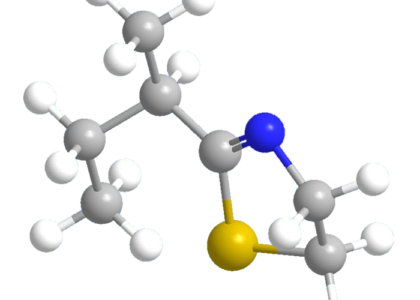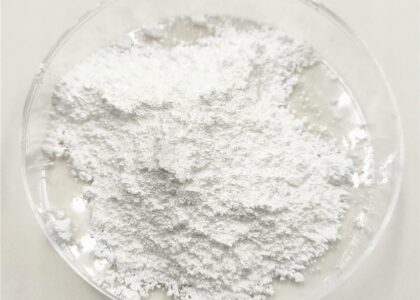In 2022, it is projected that the market for flame retardant chemicals will be worth US$8,560 Mn. The market is anticipated to develop at a CAGR of 7.1% from 2022 to 2032, reaching a worth of US$ 16,990 Mn by that year.
The end-use verticals like transportation, electrical & electronics, construction, and likewise are increasingly incorporating flame retardant chemicals in their daily operations to adhere to fire prevention and safety regulations. In homes and offices, flame retardant chemicals do eliminate risk of fire from consumer and electrical goods. They also perform the function of safeguarding modernized materials and equipment like building insulation, circuit boards, engineering thermoplastics, cables, and likewise.
However, halogenated flame retardants like chlorinated, brominated, and others are not preferred due to the health hazards caused by them. It needs to be known that some compounds like HBCD (Hexabromocyclododecane) are banned in Canada, Japan, and the EU. This has, in turn, called for developing safer alternatives like bromine-, phosphorus-, and chlorine-based non-halogenated flame retardant chemicals. Along these lines, GYC Group has started offering a spectrum of products free of halogens.
For insights on global, regional, and country-level parameters with growth opportunities from 2022 to 2032 – Download a sample report @ https://www.futuremarketinsights.com/reports/sample/rep-gb-293
The manufacturers are looking for comparatively less toxic products for making alterations in product composition like aluminum trihydroxide. The demand would be arising from the applications like epoxy resins, polyolefins, PVC (polyvinyl chloride), rubber, engineering thermoplastics, and likewise.
Non-halogenated flame retardant chemicals hold more than 50% of the market share as of the year 2020. This could be reasoned with growing demand for less toxic and environmentally-friendly flame retardants. Combination of brominated organic compounds and antimony trioxide is generally used in the form of flame retardants in the mounding compounds. They are known for having negligible effects on the environment.
The same antimony trioxide, on combining with hydromagnesite fillers, renders benefits, but adverse effects of antimony trioxide on the environment are expected to restrain the usage of antimony trioxide as flame retardant chemicals in the near future.
Polyolefins are holding the largest market share (more than 20%) due to their increasing applications in plastics in various applications. The polymer could thus be prevented from dripping, and smoke formation could be subverted. Products needing flame retardant chemicals in the polyolefin fabrics include mattress covers, construction fabrics, carpet packing, components in planes and trains, siding and roofing, automotive fabrics, and likewise. Future Market Insights has walked through these facts with insights in its latest market study entitled ‘Flame Retardant Chemicals Market’.
Key Takeaways from Flame Retardant Chemicals Market
- North America holds a significant market share due to preference for flame retardant chemicals in the US.
- Europe is subject to stringent regulations. In other words, the major manufacturers of automotives are making it mandatory to use fire retardant chemicals in the automotive components.
- LATAM, MEA, and the Asia-Pacific are subject to increase in construction activities, which are expected to put the flame retardant chemicals market on the top pedestal in the upcoming period.
Competitive Landscape
Clariant AG, in December 2021, started constructing a flame retardant manufacturing facility at Daya Bay, Huizhou (Guangdong Province China).
Italmatch Chemicals S.p.A., in November 2021, came up with a novel phosphorus flame retardant called ‘Liquid Masteret’. It is useful in construction, electrical & electronics, and transport sectors, particularly when it’s not advisable to prescribe halogen owing to higher smoke corrosivity when fire arises.
LANXESS, in December 2018, invested US$ 222.3 Mn in flame retardant chemicals. This investment would come through in the plants located in the UK, Germany, and the US.
“Flame retardant chemicals, on adding to combustible materials like plastics, textiles, and coatings, prevent fire or slow down as far as growth is concerned, which is driving the market for flame retardant chemicals”, says an analyst from Future Market Insights.
Ask an Analyst @ https://www.futuremarketinsights.com/ask-question/rep-gb-293
Market Segmentation
By Type
- Chlorinated flame retardants
- Brominated flame retardants
- Organophosphorus flame retardants
- Nitrogen flame retardants
- Antimony oxide
- Aluminium hydroxide
By Application
- Automotive
- Construction
- Textiles
- Electronics
- Electrical industry
About Future Market Insights (FMI)
Future Market Insights, Inc. (ESOMAR certified, Stevie Award – recipient market research organization and a member of Greater New York Chamber of Commerce) provides in-depth insights into governing factors elevating the demand in the market. It discloses opportunities that will favor the market growth in various segments on the basis of Source, Application, Sales Channel and End Use over the next 10-years.
Contact Us:
Future Market Insights Inc.
Christiana Corporate, 200 Continental Drive,
Suite 401, Newark, Delaware – 19713, USA
T: +1-845-579-5705
LinkedIn| Twitter| Blogs | YouTube
For Sales Enquiries: sales@futuremarketinsights.com





